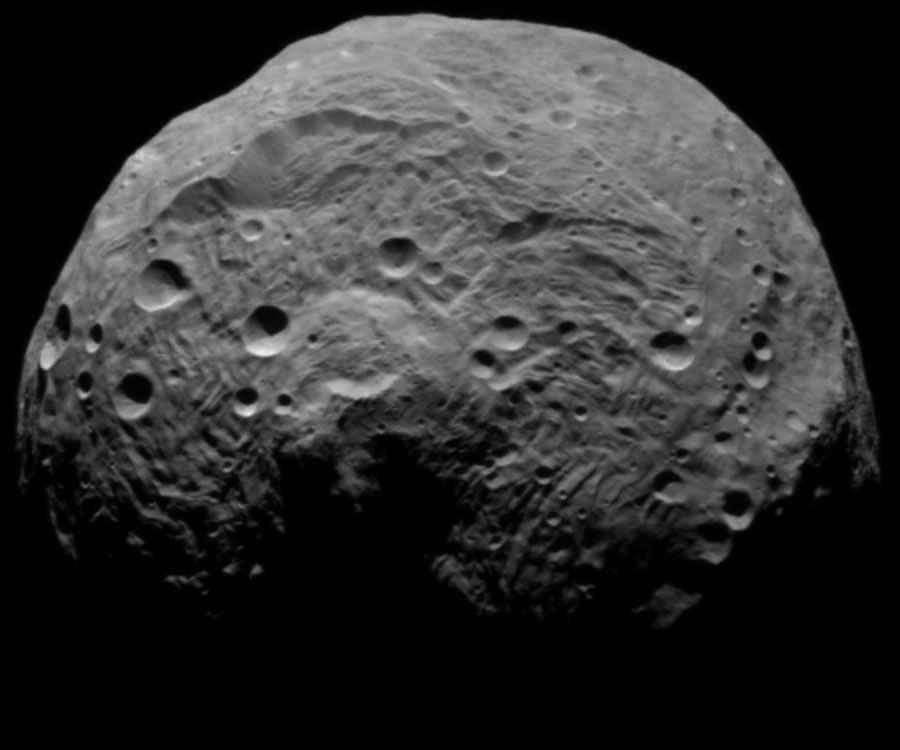Post by Dr. James Wray, Cornell University
Recent missions to Mars have pursued a theme of “following the water,” with orbital and surface observations revealing locations where groundwater processes have affected rocks exposed at the modern surface. Rock fractures or joints can act as conduits for subsurface fluids, which may precipitate fracture-filling minerals or alter pre-existing rocks along the fracture walls. Both outcomes are evident in orbital images of sulfate-bearing layered rocks in Candor Chasma, part of the vast Valles Marineris canyon system near the Martian equator. Joints in these layered rocks are surrounded by bright “halos” attributed to chemical bleaching by paleo-fluids, as observed in sedimentary rocks on Earth (Image 1). Some joints in Candor Chasma also exhibit positive relief (Okubo and McEwen, 2007), suggesting that fluids cemented the fracture walls and increased their resistance to subsequent erosion. These ridged fractures would therefore represent another example of inverted topography on Mars.

Image 1: Rocks bleached by fracture fluids on Mars and Earth. (a) Portion of HiRISE image TRA_000836_1740 in Candor Chasma, from Okubo and McEwen (2007). (b) Jurassic Entrada Sandstone, Salt Wash graben, southeast Utah (credit C. Okubo).
Resistant fracture fills have also been imaged at a smaller scale by the Mars Exploration Rovers (Image 2). In the sedimentary rocks of Meridiani Planum, these millimeter-to-centimeter-wide fins contain clastic grains and only partially fill fractures, consistent with minor cementation by Fe-oxides or silica deposited along fracture walls (Knoll et al., 2008). Even narrower salt veins are found in Martian meteorites (Bridges et al., 2001) and were observed by Spirit in some basaltic rocks in Gusev crater. Fracture paleo-fluids on Mars manifest their influence over a range of scales.

Image 2: (a) Fins protrude from fracture walls at Erebus crater outcrop, Meridiani Planum. Opportunity Sol 725 Pancam L257 image; credit D. Savransky and J. Bell (Cornell) / JPL / NASA. (b) Similar fins at Endurance crater outcrop; Opportunity Sol 170 Pancam L257. (c) Light-toned vein in rock Mazatzal, Gusev crater; Spirit Microscopic Imager mosaic colorized with Pancam, modified from Haskin et al. (2005).
Mars rovers may soon sample some of the larger ridged fracture features visible from orbit. Opportunity is driving toward the rim of Endeavour crater, the nearest portion of which (“Cape York”) has a polygonal texture in places, with light-toned ridges along polygon boundaries that may be resistant fracture fill (Wray et al., 2009). Furthermore, next year the Mars Science Laboratory rover Curiosity will land at one of four candidate sites, each of which has fractures with positive relief in places (Image 3). In some cases these ridges could have formed through “dry” processes such as dike intrusion or contraction, the latter especially where ridges are paired (Hallet et al., 2011). But in other cases, fracture ridges with distinctive colors likely mark fluid migration pathways, and rover observations of their compositions will enable characterization of subsurface aqueous environments distinct from those recorded by the fluvial landforms at the ancient surface. The final landing site selection workshop for Curiosity occurs this month.

Image 3: Diverse fracture ridges at Curiosity’s candidate landing sites. (a) Colorful polygons at Mawrth Vallis (HiRISE PSP_006676_2045). (b) Single and double ridges on Eberswalde crater floor (ESP_019757_1560) (c) Network of ridges on Gale crater mound (PSP_001752_1750). (d) Breccia with light-toned ridges on Holden crater floor (ESP_019322_1530). High Resolution Image
Recommended reading:
Anderson, R. B., and J. F. Bell III (2010), Geologic mapping and characterization of Gale Crater and implications for its potential as a Mars Science Laboratory landing site, Mars, 5, 76–128, doi:10.1555/mars.2010.0004. [Abstract]
Bridges, J. C., D. C. Catling, J. M. Saxton, T. D. Swindle, I. C. Lyon, and M. M. Grady (2001), Alteration assemblages in Martian meteorites: Implications for near-surface processes, Space Sci. Rev., 96, 365–392, doi:10.1023/A:1011965826553. [Abstract]
Fairén, A.G., Schulze-Makuch, D., Rodríguez, A.P., Fink, W., Davila, A.F., Uceda, E.R., Furfaro, R., Amils, R. and McKay, C.P., 2009, Evidence for Amazonian acidic liquid water on Mars–A reinterpretation of MER mission results. Planetary and Space Science, 57: 276-287. [Abstract]
Grant, J. A., R. P. Irwin III, S. A. Wilson, D. Buczkowski, and K. Siebach (2011), A lake in Uzboi Vallis and implications for Late Noachian–Early Hesperian climate on Mars, Icarus, 212, 110–122, doi:10.1016/j.icarus.2010.11.024. [Abstract]
Hallet, B., R. Sletten, and K. Whilden (2011), Micro-relief development in polygonal patterned ground in the Dry Valleys of Antarctica, Quat. Res., 75, 347–355, doi:10.1016/j.yqres.2010.12.009. [Abstract]
Haskin, L. A., et al. (2005), Water alteration of rocks and soils on Mars at the Spirit rover site in Gusev crater, Nature, 436, 66–69, doi:10.1038/nature03640. [Abstract]
Knoll, A. H., B. L. Jolliff, W. H. Farrand, J. F. Bell III, B. C. Clark, R. Gellert, M. P. Golombek, J. P. Grotzinger, K. E. Herkenhoff, J. R. Johnson, S. M. McLennan, R. Morris, S. W. Squyres, R. Sullivan, N. J. Tosca, A. Yen, and Z. Learner (2008), Veneers, rinds, and fracture fills: Relatively late alteration of sedimentary rocks at Meridiani Planum, Mars, J. Geophys. Res., 113, E06S16, doi:10.1029/2007JE002949. [Abstract]
Okubo, C. H., and A. S. McEwen (2007), Fracture-Controlled Paleo-Fluid Flow in Candor Chasma, Mars, Science, 315(5814), 983–985, doi:10.1126/science.1136855. [Abstract]
Okubo, C. H., R. A. Schultz, M. A. Chan, G. Komatsu, and HiRISE Team (2009), Deformation band clusters on Mars and implications for subsurface fluid flow, Geol. Soc. Am. Bull., 121, 474–482, doi:10.1130/B26421.1. [Abstract]
Wray, J. J., B. L. Ehlmann, S. W. Squyres, J. F Mustard, and R. L. Kirk (2008), Compositional stratigraphy of clay-bearing layered deposits at Mawrth Vallis, Mars, Geophys. Res. Lett., 35, L12202, doi:10.1029/2008GL034385. [Abstract]
Wray, J. J., E. Z. Noe Dobrea, R. E. Arvidson, S. M. Wiseman, S. W. Squyres, A. S. McEwen, J. F. Mustard, and S. L. Murchie (2009), Phyllosilicates and sulfates at Endeavour Crater, Meridiani Planum, Mars, Geophys. Res. Lett., 36, L21201, doi:10.1029/2009GL040734. [Abstract]



